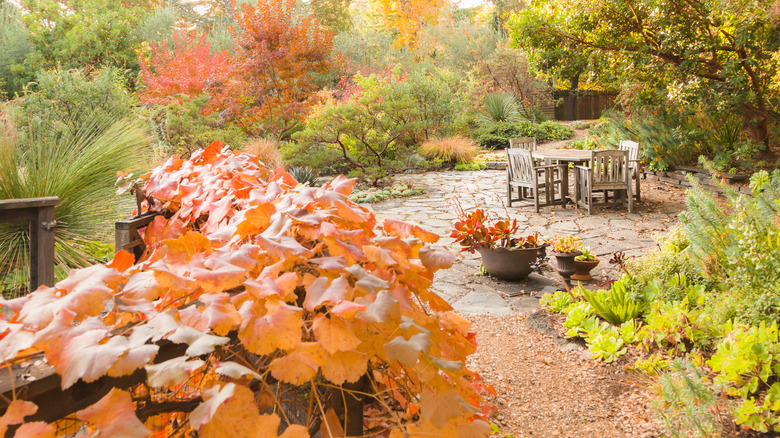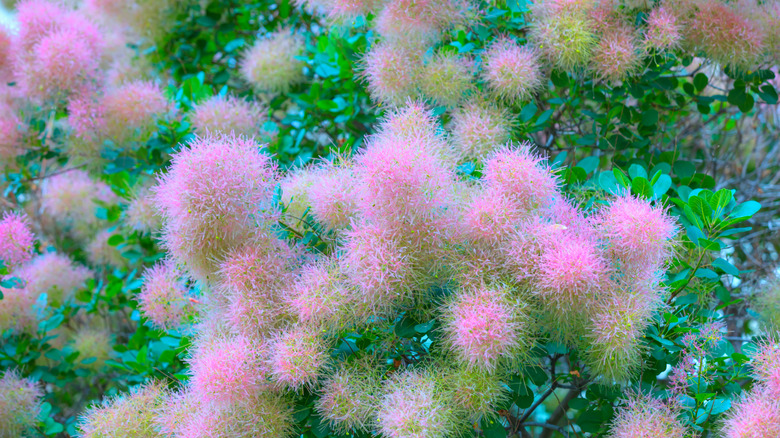The Beautiful Variety Of American Smoke Tree That Adds Sweet Color To Your Yard
If you've ever seen an American smoke tree in full bloom, the sight is truly amazing. It looks like the tree is surrounded by a gorgeous halo of wispy, colored smoke. This illusion comes from the soft, billowy hairs that cover the flower clusters en masse. One of the most outstanding varieties of the American smoke tree is the 'Cotton Candy' cultivar (Cotinus obovatus 'Northstar'). This species provides beautiful purplish-pink "smoke," but that's not the only sweet color that this tree offers. In the fall, the dull green leaves turn a brilliant orange and red, adding an extra dimension to its allure. That's a lot of stunning color from just one small tree!
The American smoke tree is native to the southern states of the U.S. and can be grown in USDA hardiness zones 3 through 8. This particular species can reach a height of around 18 feet, making it ideal for use as a backyard specimen tree. You could also grow a row of them as an attractive natural hedge. Since these trees are deer-resistant, they can make a great protective living fence around your garden. This informal screen would also be ideal to plant behind some different flowering dwarf trees to bring even more color to your yard. As an added bonus, the American smoke tree is also attractive to bees, butterflies, and songbirds.
How to grow this American smoke tree in your yard
The 'Cotton Candy' smoke tree makes a beautiful addition to any space where you want a tree perfect for a small garden, especially if you're looking for an eye-catching splash of color. It can be grown in full sun but will handle a partly shady spot in your yard. It does prefer moist soil that's free-draining and a little on the alkaline side. The smoke tree is particularly tolerant of urban conditions and doesn't really need a lot of special care when grown in your yard. Keep it watered just after planting, but once it becomes established, it's relatively drought-tolerant.
The canopy of 'Cotton Candy' is quite low, around 3 feet from the ground, so it's not ideal as a shade tree. You could prune off some of the lower branches to raise the height of the canopy a little, if you wish. It's best to prune this tree in late winter, before it comes out of dormancy. Just be aware that the sap from this tree does have a strong odor. All in all, if you're looking for stunning trees with pink flowers to grow in your yard, this particular variety belongs at top of your list.

